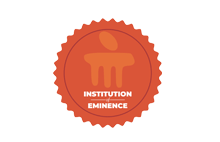Determination of Refractive Error Using Direct Ophthalmoscopy in Children
Document Type
Article
Publication Title
Clinical Ophthalmology
Abstract
Purpose: Refractive error is a major cause of visual impairment in children and its early detection can prevent ocular morbidity such as amblyopia and strabismus. Brückner test is a comprehensive test which can be easily administered in children using a direct ophthalmoscope. We aimed to determine refractive error in children by analysis of the red reflex using modified Brückner test. Patients and Methods: This prospective observational study was conducted on 683 undilated eyes of 683 children aged four to 10 years. They were evaluated with a direct ophthalmoscope from one meter in a dimly lit room. The characteristics of the red reflex and crescent obtained were compared with photoscreener refraction value and analyzed. Results: The presence of superior crescent was associated with hypermetropia (Chi square 37.11, p < 0.001, kappa = 0.15) and inferior crescent with myopia (Chi square 157.29, p < 0.001, kappa = 0.477). Superior crescent was 98.4% sensitive in detecting hypermetropia. Hypermetropia greater than +1.5D, was associated with larger superior crescent crossing horizontal midline of pupil (Chi square = 5.29, p = 0.021). Conclusion: The modified Brückner test is useful in detection and quantification of refractive error in children. It is easy, simple, quick and can be employed in the community as a screening test to detect potentially amblyogenic refractive errors.
First Page
989
Last Page
995
DOI
10.2147/OPTH.S453207
Publication Date
1-1-2024
Recommended Citation
Vijendran, Sruthi; Kamath, Yogish S.; Alok, Yash; and Kuzhuppilly, Neetha I.R., "Determination of Refractive Error Using Direct Ophthalmoscopy in Children" (2024). Open Access archive. 7066.
https://impressions.manipal.edu/open-access-archive/7066


